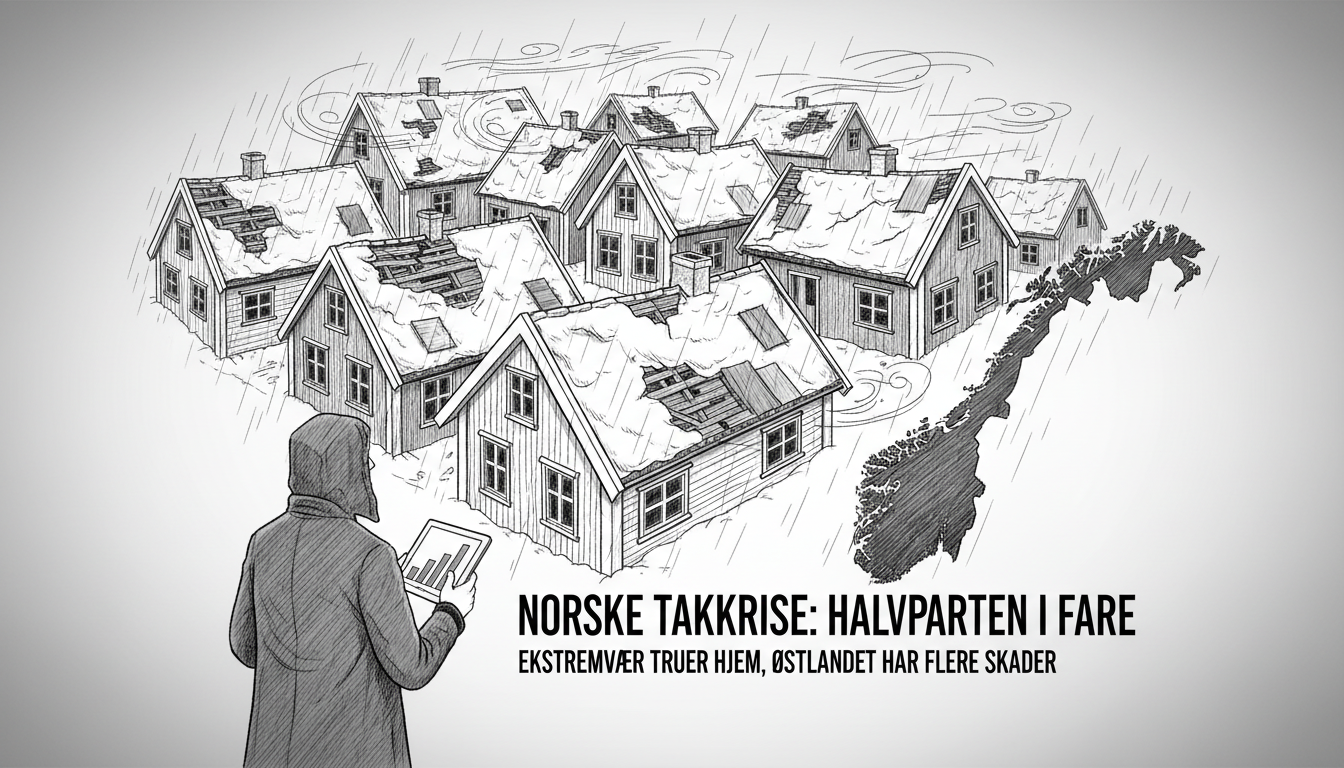Nearly half of Norwegian homes have roofs with defects or problems that could lead to damage during extreme weather and increased rainfall. Insurance company If revealed these findings after a comprehensive technical review of residential properties.
The study showed weaknesses in exterior roofing, underlayment, roof penetrations, gutters, downspouts, drainage systems, and snow guards. Line Gjengedal Ruud, Nordic claims handling leader at If, explained that many homeowners forget or postpone maintenance on what she calls the fifth facade of the house.
Ruud emphasized that the weaknesses often lie in small details like minor cracks in roofing materials or gaps around chimney flashings. With climate change creating increasingly challenging weather patterns, regular and proper maintenance becomes even more critical for Norwegian homeowners.
The technical inspection covered nearly 4,300 houses across Norway. Researchers classified problematic roofs using either yellow or red level designations. Yellow level indicates issues that don't require immediate repair, while red level signifies major defects or damage needing urgent attention.
Eastern Norway showed the most concerning results. Østfold county had the highest proportion of roof weaknesses at 74 percent of inspected homes. Rogaland followed with 58 percent of roofs showing problems, and Buskerud recorded 54 percent with deficiencies.
This situation presents serious concerns given Norway's climate challenges. The country experiences heavy snowfall in winter and increasingly intense rainfall periods throughout the year. Proper roof maintenance becomes not just a matter of property preservation but also safety.
Norwegian building standards typically require durable construction to withstand harsh weather conditions. Yet this study suggests many homeowners may be underestimating maintenance needs. The costs of delayed repairs could far exceed regular maintenance expenses, especially if water damage occurs.
Homeowners should consider professional roof inspections, particularly before winter sets in. Insurance companies may also adjust their policies based on these findings, potentially requiring more frequent inspections for coverage eligibility.
The concentration of problems in specific regions suggests local weather patterns and building practices might contribute to the issue. Østfold's coastal location exposes homes to both sea winds and precipitation, while Rogaland's varied climate creates different challenges.
For international readers considering property investment in Norway, these findings highlight the importance of thorough building inspections. The Norwegian housing market maintains generally high standards, but maintenance remains the homeowner's responsibility.
This study serves as a wake-up call for property owners across Scandinavia, where similar climate challenges exist. Regular roof maintenance should be prioritized as extreme weather events become more frequent throughout the Nordic region.

